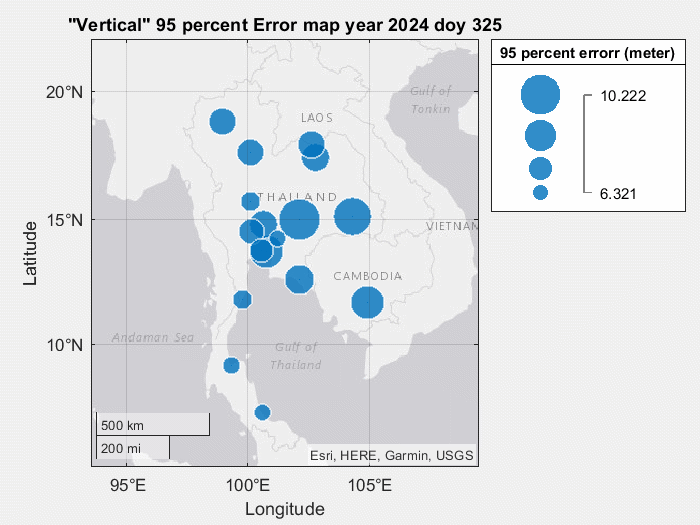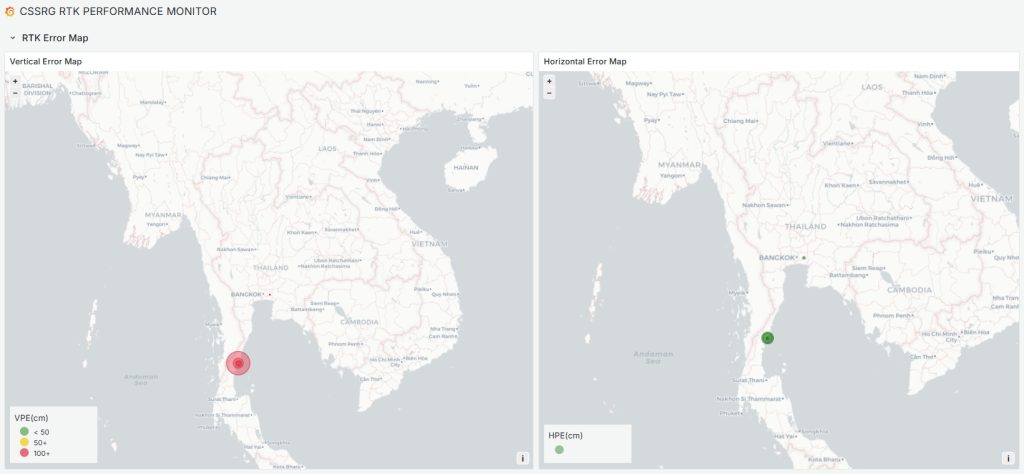Positioning error map for single-frequency user
Single point positioning using correction model: Klobuchar model (ionospheric delay) and Saastimonen model (Tropospheric model)


Differential TEC (DTEC)
RTK positioning error map
Interpolated TEC map
Radio usable communication
Under updating …

